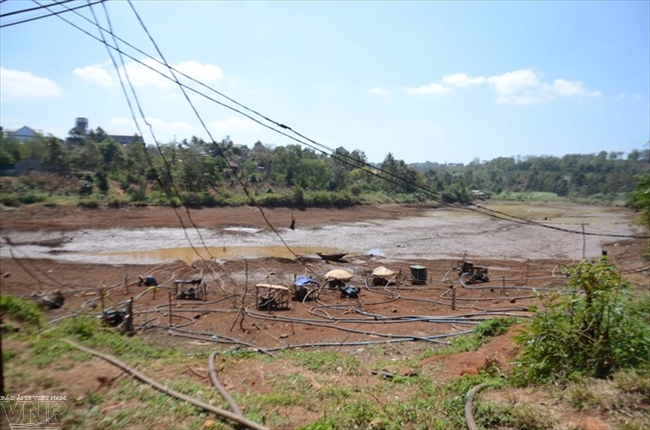
In the eastern and south-eastern districts of Gia Lai province and the eastern part of Dak Lak province, the possibility of serious water shortages and severe drought were likely to occur, Thanh warned.
In those areas, rainfall in 2018 was about 60-70 percent against the average level in previous years.
Last year’s water levels in reservoirs were much lower than previous years. At the end of last year, serious water shortage occurred in the Ba River, according to Thanh, and Ka Nak Hydropower Reservoir’s water levels were only at 10 percent of its capacity.
“The region is now under the influence of El Nino. In February, March and April, rainfall was forecast to be lower than usual, and the rainy season was expected to come later than usual.”
Climate change is no longer a small issue. Its adverse effects are increasing at an alarming rate, and affecting all areas of life.
According to the International Water Resources Association, Vietnam was among the water shortage-facing nation group. About 63 percent of the total flow of rivers came from neighbouring countries.
The country was also one of the five countries most seriously affected by climate change.
In the northern delta and central coastal regions, high rainfall has caused flooding, but poor infrastructure had affected water sources.
In addition, pollution in downstream areas was making the problem more serious.
Surface water pollution in rivers, lakes, canals and ditches in urban areas and residential areas was still common. Air pollution in urban areas, in industrial zones and handicraft villages remains high while plastic waste was alarming. Many unexpected storms, landslides, prolonged heavy rain, flash floods in mountainous areas had caused significant damage to both life and property in the localities.
The biggest flood in the Mekong River since 2011 occurred, causing serious coastal erosion.
Talking about natural disaster prevention and climate change response, Deputy Minister of Science and Technology Pham Cong Tac said the negative impacts of climate change were on each person, each family and every nation in the world. To minimise the negative impacts, every region, every country needed to work together. It would require community communication so that every Vietnamese citizen had a sense of environmental protection to cope with climate change, along with technological innovation and application that ensured sustainable economic development.
Minister of Natural Resources and Environment Tran Hong Ha said the country’s climate change response and natural disasters-prevention scheme needed about 15.5 trillion VND (664.8 million USD), including 1.5 trillion VND (64.3 million USD ) for emergency recovery of rivers and coastal erosion; 3.7 trillion VND (158.7 million USD) for medium-term projects in Mekong Delta provinces.
Prime Minister Nguyen Xuan Phuc has signed a resolution on sustainable development in the Mekong Delta as part of an effort to cope with climate change. Under the resolution, by 2050, the region’s sustainability would be ensured with high-quality agriculture, eco-tourism, services and industry, especially the processing industry. The latter would increase the value and competitiveness of the area’s agricultural products. The infrastructure system of the delta would also be greatly improved by that time.
VNA/VNP

















